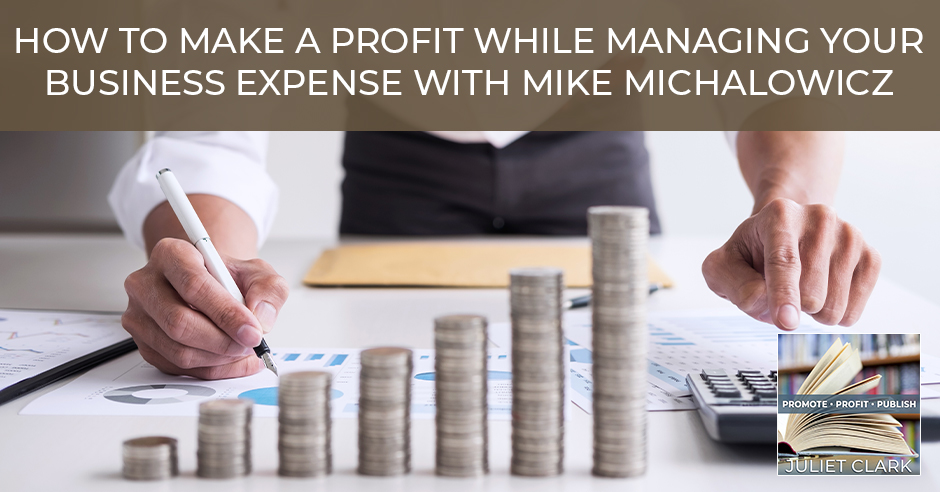
You’ve been running your company for some time now, but why does it feel like you’re not getting any richer? Author and entrepreneur Mike Michalowicz explains why a lot of businesses are not making a profit. Attributing this phenomenon to the traditional way entrepreneurs define profit, he is now challenging this psychology of cash management and proposing a different method of earning a profit. He carries on to discuss the ideas behind his “profit first” strategy and how a lot of companies are slowly transitioning over and benefiting from it. As someone who’ve launched businesses and failed at them, Mike found his calling as an author with a goal to make entrepreneurship simple with every book he writes.
—
Watch the episode here:
Listen to the podcast here:
How To Make A Profit While Managing Your Business Expense with Mike Michalowicz
I am so excited about my guest. Before I introduce him, I want to invite you to go over and take our Promote, Profit, Publish Quiz. Find out if you have all the pieces in place to be able to launch your products and services successfully. My guest is Mike Michalowicz. I’m so excited about this. I so appreciate him doing this. At the beginning of 2019, my coach and I read his book, Profit First, and we decided to engage in his strategy and we both had amazing results.
I will share with him on this episode that I went from a scarcity mindset with my money and my books doing my accounting and the traditional way to my debt is being paid off and I feel like I have extra money all the time. Mike launched three multimillion-dollar companies before his 35th birthday. He was awarded the New Jersey SBA’s Young Entrepreneur of The Year Award when he was 26 years old. He sold his first company to private equity and his second one to a Fortune 500 company. He’s the author of the Toilet Paper Entrepreneur, The Pumpkin Plan and Profit First. He’s a former small business columnist for the Wall Street Journal. Mike’s books have been translated in over ten different languages and he’s an active partner in multiple companies, including an American manufacturer, a business growth consultancy and augmented reality tech firm and certification organization for accountants, bookkeepers and business coaches.
—
I’ve got Mike Michalowicz. I’m going to have you say something about yourself because I love it when I listened to your audiobooks how humorous you are.
I’m an author but I’m an entrepreneur first and foremost. I’ve been an entrepreneur my entire life. I think the interesting thing about my story, I’ve had the blessing of building and selling to multimillion-dollar companies. I don’t think that’s the blessing. I’m very blessed because those moments happened. The blessing is in the struggle. Those businesses I’d never ran effectively when I was running them. I was just very fortunate that they were acquired. I also, after selling those two first companies, I started a third company, which I conveniently leave off my resume. That was a total disaster. I was an Angel investor and had no right to be at that space. I had no clue what I was doing and lost all my wealth. That triggered me to reinvestigate my life. I went through depression and struggled for a period of my life.
What happened was I realized that sometimes we would dream. They say, “If you had all the money in the world, what would you do?” I told myself, “If I had all the money in the world, I’d be an author.” I found it as a complementary question. When I had it restart and I had no money, I said, “What do I want my vocation to be? I want to be an author and I’m going to make a living doing this.” It was that combined thing that I determined for myself. That’s my calling self-assigned or assigned elsewhere. I said, “This is why I need to do.” That’s why I became a full-time author writing business books that hopefully make entrepreneurship simple. That’s my goal with every book I write.
I had shared a little bit about the way you have made what my partner and I are doing simply to my coach through Profit First. You lost $1 million in a couple of years. Is that the same company you were talking about?
It’s an Angel investor. I started putting money into all these different businesses trying to pump and dump businesses and I was blowing the money, but also a ton of arrogance and ignorance. I’ve got cars. We’ve got a house out in Hawaii on a small island called Lanai. I got a private home out there for sabbatical and just spending money because I expected that my lifestyle would continue to increase, but my income source stopped abruptly and dropped as a new business, but my actual spend, that part of lifestyle continued.
That gap, when you make no money and you’re blowing money, that’s the formula for losing money and I was good at it. I lost all of my wealth within a couple of years. I raced through it. The funny thing is I saw my savings dwindling and logically I saw it going away, emotionally, I never accept it. I thought that one big investor would come, that one big moment happens, something would turn this, that I’d finally get it right. When I finally faced that I had failed was I able to turn things around. When I finally lost everything. I call it the financial heart attack. That’s when I realized I had to figure out something new. I’m grateful for that period of my life, even it’s the darkest period of my life at that point.
I think that cycle you’re speaking of is what a lot of entrepreneurs get into. It’s going to keep going up. I’m growing and they don’t anticipate what’s going to happen in a downturn or if things go bad. That’s a great lesson for everybody reading. Why do you think entrepreneurs struggle to make a profit?
I think there’s a foundational problem with the formula we use even the vernacular. The traditional formula for profit says sales minus expenses equals profit. You have the sales, you incur expenses running your business, what’s left over is profit, so it makes logical sense. Here’s the problem is human nature. When something comes last, it means it’s insignificant. We call it the Mañana syndrome, “I can wait.” It’s not only in that formula, the vernacular we use. We say profit is the bottom line or the year-end. All those terms say it can wait. It comes last. It’s the bottom. The problem I think is not with us as much as what we’ve been taught and what I propose the solution is I wrote a book, Profit First, on the concept.
Take your profit first. It’s the pay yourself first principle applied to business. It’s sales minus profit equals expenses. An execution, every time we have a sale or business, take a predetermined percentage, 5%, 10% or 15%. Hide that money away. That’s our cash profit, and then your business will tell you what truly has to operate. We have over 150,000 businesses. We think we’re approaching 200,000 businesses doing profit first. This little shift of taking profit first ensures profitability and it ensures you operate the business of what’s truly available to operate the business, not maxing out your spend.
That is such a great point. He’s talking about the Profit First book. Can I share with them the experience that we had?
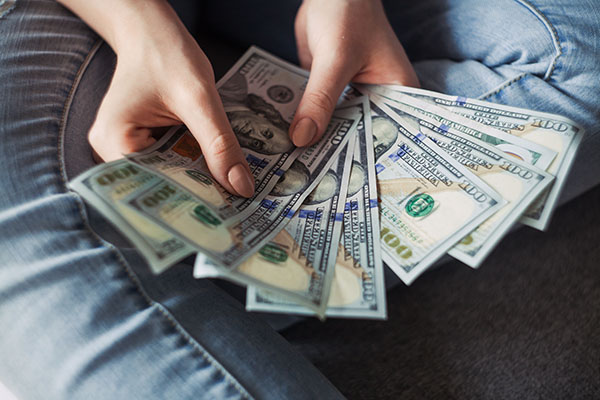
Making A Profit: Taking your profit first ensures you operate the business from what’s truly available to operate it and not maxing out your spend.
I would love to.
I wasn’t writing myself a paycheck. I was doing exactly what you were talking about. At the beginning of the year, the first one was hard. I just went back and forth like, “How am I going to do this?” As I moved throughout the year, I realized all of a sudden that I was out of my scarcity thinking. Every time I put the money into the buckets, more did come in and it was something I hadn’t anticipated. I’m always worried, “Where am I going to put this? How am I going to shift?” It was amazing how freeing that became from the scarcity mindset that I think I was working from with that I’ll pay myself last piece.
There’s a term for that. You’re human and that’s called human. That’s how we operate. I do a presentation on Profit First. I’m traveling all over the world, keynoting on Profit First and my other books too. I’ll ask the audience when I do the Profit First presentation, “Who has employees?” Many people in the audience will raise their hand. They have an employee or two or sometimes hundreds. I’ll say, “What is the name of your best employee?” They never named themselves. They always named someone else and I’m like, “Aren’t you the best employee?” They’re like, “My ego won’t let me say it.” I’m like, “How do you treat yourself?” They don’t pay themselves. The funny thing is the “best employee” name would never let that employee go without a paycheck.
If that employee says, “I need to take a vacation, even though I’ve used up my time, but my family’s getting together. I need a paid vacation, can I get it?” Do things like that. We’ll do extraordinary things to cover them because we consider them the best. If we don’t pay ourselves a consistent salary. It’s just a matter of time before we start to resent our own business. That’s why I did. In my first business, I didn’t take a salary. Anything consistent for years and I hated the business. I hated that I had to refinance my house to pay all my employees, but I wasn’t paying myself. I loathed it. The second business was the same way. In the profit first system, we not just take profit, which is different than pay. We make sure that there’s profit, the reward for being a shareholder, but we also allocate a salary to the best employee ever, which is the owner or owners to ensure that they are being paid consistently. That’s critical.
Tell us a little bit about the GAAP Frankenstein Formula.
GAAP stands for Generally Accepted Accounting Principles. The foundational formula for GAAP accounting is that sales minus expenses equal profit. I’ve called it the Frankenstein Formula because it creates a monster. I think that’s the reality of many businesses. We bring something to life, we reanimate flesh like Frankenstein, and there’s this great success, but then we realize that this monster we created now starts chasing us and taking to our soul. We bring this business to life and it sucks our soul away, which is the Frankenstein story. The root of it is this formula. It becomes a cash-sucking monster. The formula says sales minus expenses equals profit. Every time sales increases, it’s human nature. To spend all that money to come in and our expenses grow almost uncannily at the same rate as our sales. It’s only when we start taking our profit first, we put this GAAP in there and we start controlling our expenses appropriately because we’ve assured profitability. That’s how you control this cash eating monster and make it into a moneymaking machine.
It’s a monumental mistake not to anticipate a downturn when your business has been moving in an upward trajectory. Share on XWhat are the four fundamental lessons you’ve learned from the health and fitness experts?
This is why I share my keynote in the Profit First book. There are four principles in fitness that translate interestingly to not just physical fitness but to fiscal fitness. It’s said, “Don’t change yourself.” It’s very hard to do an extreme exercise regimen like P90X or something. She said, “Change the system around you to capture what you want.” One principal she shared is a concept of small plates. If you reduce the size of the plate, you’re eating off of its automatic force portion control. You can only fill up so much on a plate. Plates in the last 300 years have doubled in size of what they were before. As plates have double the size, it’s increased our portions and as a society, our waistline’s doubled in size. What we need to do with finances is instead of having one big plate, most business owners have a single bank account. All our deposits go in there. All their checks, maybe have one or two.
Set up multiple small plates with its pre intended purpose so when money flows in the business, we treat the depository account as a serving tray. We then carve that money up onto these small plates. One for paying the owner, one is paying for taxes, start a business for financial freedom. Business can pay your taxes. One for the operating expenses of operating the business. Now you’re carving the money up to these different plates based upon percentages and now you are forced to consume less. It’s portion control.
Step two she shared was the concept of doing things in sequence. Eat your vegetables first when it comes to food. In our finances, what we need to do is alter your bank account. You do this at your bank, you set these multiple accounts. When money flows into your business, we always allocate that inbound income first to profit. That’s the vegetable equivalent. When you do this, there’s an endorphin release. You literally transfer the money at your bank from your income account to the profit account, it’s like, “Yes, I have a little profit,” and you feel great.
We allocate a portion of the money to owners pay. It’s like, “Yes, I’m getting paid.” This is how you start building the profit muscle. We allocate money toward taxes to pay your taxes. I consider that a protection mechanism. It’s required by law that we do this. It’s a reward and protects, and the last account is the operating expenses and that serves the business. The sequence of reward, protect, and serve is a great way to build that profit muscle. The third is to remove temptation. I love chocolate chip cookies. This fitness instructor said, “If you put a chocolate chip cookie in front of you and you try to use willpower to prevent eating it, willpower always fatigues.” It’s near impossible. The only way to prevent consumption is to remove accessibility in the first place.
With money, if we move this profit to our bank, the temptation will kick in. It’s like, “I need to use that money to pay some bills,” and then we unwind this whole system. We need to set up another bank account where we hide the profit from ourselves, a depository on the account. One without online banking, starter checks or an ATM card. Hide your money away and you will find a way to survive off of what you need to survive off of. That profit accumulates down the road will take out portions of that. That’s the fourth and final step is that we need to go into a rhythm of allocating money. In the fitness field, they suggest five small meals a day. It’s automatic portion control and you won’t overeat because you’re not in a starving or hungry state. By continually eating small amounts, you eat less.
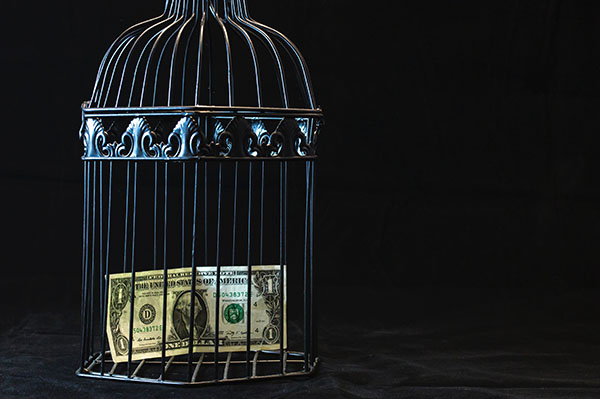
Making A Profit: Hide a preset percentage of your money away, and you will find a way to survive off of what’s left.
In our business, businesses go through these peaks and valleys financially and we have a lot of money. We’re like, “Business is crushing it.” The next day when all the money’s gone, we’re like, “My business is miserable and we go through this bipolar experience with cash.” I call it the 1025 rhythm. Money flows in and then we allocate it out every two weeks on the 10th and 25th. There are strategic reasons why those days. We allocate the money out into these different plates. We pay our bills out of the operating expenses. We hideaway the profit at the profit hold account that removes the temptation account. We pay ourselves out of the owners pay. By doing this on a regular basis, it kicks us out those peaks and valleys. When money comes in, we don’t spend it right away. It sits and gets allocated on percentage. When there’s no money coming in, we’re not panic because we’re in this rhythm. Also, part of the rhythm every 90 days that profit that’s hidden away, that’s when we take our profit distributions. Not all the money, usually 50% of what’s accumulated. We take that money out to reward the shareholder. The person took the risk to start the business. Those are the four principles of the fitness instructor.
That’s one of the hardest things there was getting on that 1025. It was cool to see things build-up or change because I was always paying when I came in and I always felt like I was broke.
You’ve defined humanity. We’re very reactive and when we have money. We’re like, “Finally, I can pay those bills,” and we tear this stack of bills and then we feel bad at the end because there’s no money left for us. By putting this rhythm in place, we start to get a perspective. Instead of being reactionary and just paying bills as fast as possible, trying to make sales as fast as possible. Now we get this discipline of observing because there’s a time buffer in between where we become much more prudent in our use of cashflow.
I want to ask you this based on that. The people that work with you, do they find the first month or two scary?
We have over 150,000 businesses do it. We think we’re approaching 200,000 companies doing this. We’ve documented case study after case study. What we’ve observed is the transition at the beginning is scary. When a business tries to go full board, in less than the half-hour we’ve already torn through the process. If the business goes and tries to do this entire process, typically it’s too abrupt of a shift. It overwhelms them and then they say the system’s not working and they abandoned it and it’s a shame. They go back to the old way, which was working neither. We found the best way to get past that initial fear is to take very small steps. What we suggest is not saying I have all these accounts day one, just have one quality profit account.
As money flows in, take a percentage of that money, usually a small amount. We even encourage people to start at 1% because it’s inconsequential. $10,000 of deposits come in, say 1% of that is $100. If you’re going on your business with $10,000, you can probably run your business off of $9,900. That $100 though we have now allocated to our profit and you’ll see it sitting there. Over time you keep the 1% going, that profit starts growing. That’s when people start getting this muscle and say, “What if I make that 2% or 3%?” They start building the system and they say, “What if I introduced these other accounts?” I think most businesses out of these cases that we’ve done, it takes six months to a year, sometimes even two years to make the full rollout profit first, but they’re wildly successful because they started with the smallest step necessary and they’ve built up this muscle and this discipline.
All of us can be resistant to change no matter how necessary it could be, so start slow and let it grow overtime. Share on XI could feel resistance. That’s why I asked that.
I’m the guy who created this. I’ve taken 43 consecutive quarters of profit distributions. I go back several years I’ve been doing this. Starting this, I’m like, “This is not going to work for me. This is dumb.” I started to cheat the system and it fell apart. Once I started slowly for myself. My first profit distribution was $8. It wasn’t more on big money. $8 in cash in the bank and drove over to the Starbucks, I got the nicest cup of coffee I’ve ever had in my life. It was a celebration because I didn’t need to run up debt for this, I wasn’t borrowing from the company. The company was rewarding me and I started to build that muscle. Start slow, let it grow over time.
Explain what TAP is?
TAP stands for Target Allocation Percentages. My company conducted research and interviewed about 1,000 businesses, all industry agnostic. They can go like pizza shops, lawyers, accounting firms, to manufacturers. We found it is in different revenues ranges, these businesses, the fiscally elite ones were achieving certain percentages of profit and so forth. In the Profit First book, we document what a revenue range you fall in and what the fiscal elite do. I suggest making this the TAP. The thing is when you start doing the system, you don’t start at the target. That’s what we’re targeting. We use what’s called CAP. CAP stands for Current Allocation Percentages. Start slow and let it grow. Now you have something to target and yourself become part of the fiscally elite in your industry.
Is that the starting or it sounds like that’s the end game?
CAP is the end game, not the starting point. A business may be achieving 20% of its top line going toward profit. Maybe you look your business historically you’ve had no profit, which is most businesses don’t take a quarterly profit distribution. That’s the norm. You had 0% and all of a sudden go to 20% profit. Every dollar that comes in, 20% is going toward profit. That could be too abrupt of a change. That 20% is the TAP. We’re going to start and said 0%, where you were maybe at 1% and then that 1% will turn to 2%, 3%, and maybe the 20% will take us two or three years to get there, but we know at least what we’re targeting to get to.
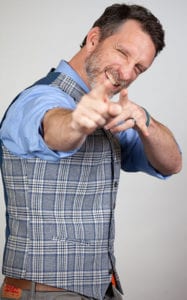 What should a business owner be looking at and doing every single day or quarter?
What should a business owner be looking at and doing every single day or quarter?
Profit distributions. The funny thing is the end of most quarters, it’s tax time and people are like, “It’s the worst time,” or more often they even just ignore their financials and say “This is the year-end and see if I had profit.” What we need is a regular reward mechanism to build our profit muscle. At the end of every quarter, the profit that’s accumulated in that holding account hidden away from us, we take out 50% of it. That’s the rule. You can tweak this, but the golden rule is 50%. If there’s $1,000 in there, I take out half of that, so $500 and I take a profit distribution. The rule with the profit distribution is it’s used as a reward. It goes to the shareholder. This is not to be pushed back into the business or reinvested.
Those terms are glorified terms of saying it’s an expense. Profit is for the reward for the shareholder. You celebrate with it however you define that. Maybe you pay off personal debt or put into your future savings or go out for an incredible dinner on $500. The next 90 days, more money will accumulate. We take out that 50% of profit again. If you had $500 taken out and you left $500 there, in the next quarter say you added $1,000 the same as the prior quarter, there’s $1,500. Coming out now $750 and staying at $750. It starts to accumulate the profits by taking out 50% and it’s just a mathematical phenomenon. There’s a certain point that starts leveling out, but it starts building that muscle in that momentum. Every quarter to do that and if you have a quarterly tax liability, that’s also when you pay your taxes. It’s always good to start off by taking a profit before you have to pay your taxes. Every quarter is a fun day for me.
I loved it when I took a paycheck. My taxes automatically went in that other account because I was one of those people who always stressed the end of the quarter and did that, “I’ll wait until the end of the year.”
I get emails every quarter and they’ll come right into my email box of people saying, “I’m so excited to pay my taxes. I can’t believe I’m high-fiving and celebrating with my team here because we’re paying taxes.” The reason I’m doing this because the business has reserved the tax liability on behalf of the owner. Usually, we pay out of our own pocket. Tax income is like, “How much do I owe?” We experienced what’s called loss aversion. We had the money in our pocket, but since the business reserves it before us, we never see the money. The businesses squirrel it away. When tax comes to tax, it’s not our problem. The business takes care of it and that’s why we start celebrating and don’t go through that loss aversion.
When Tracy Hazzard and I went through your book and did the program on our own, it was extremely difficult. Luckily, I had a great accountability partner.
Don’t forget to reward your most hardworking employee -yourself. Share on XIt’s a simple system, but it’s not easy to do. It is difficult and you have to learn and you got to hold yourself accountable. I shared the manuscript with some pre-readers and the feedback was, “This is amazing.” Who’s the accountant or bookkeeper that supports a business coach or us? We started an organization called Profit First Professionals. What we do is we certify accountants, bookkeepers and coaches in this process. They go through advanced high-end training on not just the practical applications of profit first but also the psychology around it. They work with business owners in driving profitability. If anyone is interested in learning about a Profit First Professional, maybe becoming one, go to Profit First Professionals. We’ll gladly introduce you to a certified Profit First Professional. If you’re an accountant, bookkeeper or coach and you want to get certified in this process, it’s a great way to be a service to the community and introducing new highly profitable service offering.
That’s a great way to go because when I mentioned this to my accountant, they’re like, “That’s not how you do this.” There was a lot of resistance.
That’s the best part. I’m not holding this against them or to grudge. Traditional accounting says no profit comes last. This is confusing for people that have been traditionally schooled. The vast majority of accountants and bookkeepers follow the old mentality. If you interview them and say, “Tell me about your clients. How many of them take a quarterly profit distribution? How many of them are more profitable?” The vast majority are surviving check by check. That’s just the reality. There is a faction and it’s growing rapidly of accountants, bookkeepers, and coaches who understand this concept. It doesn’t change accounting. That’s the interesting thing. It just changes the psychology of cash management and that’s what the profit first system is. It’s a cash management tool and these accountants, bookkeepers and coaches that are embracing it, they are lapping up business because entrepreneurs need this. They were among the few elites who get it, understand it and now are running circles around the accounts and bookkeepers that resist it.
You have all those books behind you. We have a lot of newer entrepreneurs that read this. What would be the prescribed order you would tell them to read those in?
Usually, I would say it start with The Toilet Paper Entrepreneur, which is for startup businesses or The Pumpkin Plan, which is a growth strategy. I withhold a suggestion. I suggest to everyone reading ask themselves a question, what is the biggest challenge you’re facing right now in your business? Where is your roadblock in business? Say you’re having problems with sales or growth, then I can say, The Pumpkin Plan is there or maybe problems with efficiency, Clockwork, or hiring challenges. I have not written a book yet on hiring practices, so maybe you want to look at Who by Geoff Smart. You want to seek out the books that solve your challenges. The Pumpkin Plan is about healthy organic growth. Clockwork is about business efficiency, Profit First a system we talked about profitability, Surge is about catching market momentum. How did you come to the industry authority? The Toilet Paper Entrepreneur is about being a startup and leveraging the fact that you have a lack of resources. Lack of resources can facilitate the best growth is ideal for a startup business.
What’s your next one? Have you written it yet?
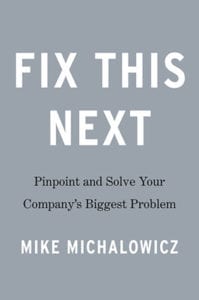
Fix This Next: Make the Vital Change That Will Level Up Your Business
I have turned in the manuscript. Believe it or not, I will knock them out until April 2020, but that’s how big publishing works. It’s called Fix This Next. My thesis is this, the biggest challenge that entrepreneurs face is they don’t know what their biggest challenge is. How do you pinpoint what you need to fix next? In Fix This Next, I developed a compass for honing in on your biggest challenge. It’s a very simple system. It’s based on Maslow’s Hierarchy of Needs. I translated it into an entrepreneurial hierarchy of needs and you go through a simple sequence of questioning and you’ll pinpoint your challenge. That’s the thing you need to fix next to open up your business and throttle forward. I’m excited about it. I’ll start keynoting about it. If you want an early peak to that and you can preorder, it’s on Amazon.
You have an event coming up, don’t you?
Yes, I do my own event. It’s called ProfitCON. It’s the only conference dedicated specifically to profit. It is specific to accounts, bookkeepers, and coaches. We’re trying to help people make this transition. I think September 27th, 28th, and 29th in New Jersey, two event days and we wrap the last day with a big celebration and picnic.
What kind of coaches would you recommend that for?
It’s ideal for business coaches, wealth management coaches and financial coaches. If you’re a life coach, probably not a good fit. If you’re a marketing coach, maybe. If you’re a traditional business coach, absolutely and financial coaches too.
Where can we find more of you?
My website is MikeMichalowicz.com. I do have a little trick, it’s MikeMotorbike.com. My nickname in high school is Mike Motorbike. It brings you to my website and what you’ll find are free chapter downloads from all my books, free resources. I’m also a blogger and a podcaster. I used to write for The Wall Street Journal for years. Those articles, all that stuff is up there for free.
Thank you so much for being on. This was fantastic and I appreciate it. It such an honor to meet you.
It’s been my privilege. Thanks for having me, Juliet.
Important Links:
- Mike Michalowicz
- Profit First
- Toilet Paper Entrepreneur
- The Pumpkin Plan
- Profit First Professionals
- Clockwork
- Who
- Surge
- Fix This Next
- ProfitCON
- MikeMichalowicz.com
- MikeMotorbike.com
About Mike Michalowicz
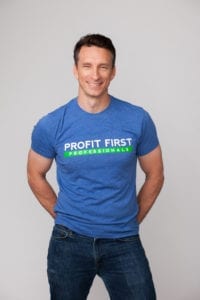 Mike launched three multi-million dollar companies before his 35th birthday. Mike was awarded the NJ SBA’s Young Entrepreneur of The Year when he was 26.
Mike launched three multi-million dollar companies before his 35th birthday. Mike was awarded the NJ SBA’s Young Entrepreneur of The Year when he was 26.
Mike sold his first company to private equity and his second firm to a Fortune 500 Mike is the author of The Toilet Paper Entrepreneur (2008), The Pumpkin Plan (2012), and Profit First (2014). Mike is a former small business columnist for The Wall Street Journal Mike’s books have been translated into over 10 different languages.
Mike is an active partner in multiple companies, including an American manufacturer, a business growth consultancy, an augmented reality tech firm, and a certification organization for accountants, bookkeepers, and business coaches.
Love the show? Subscribe, rate, review, and share!

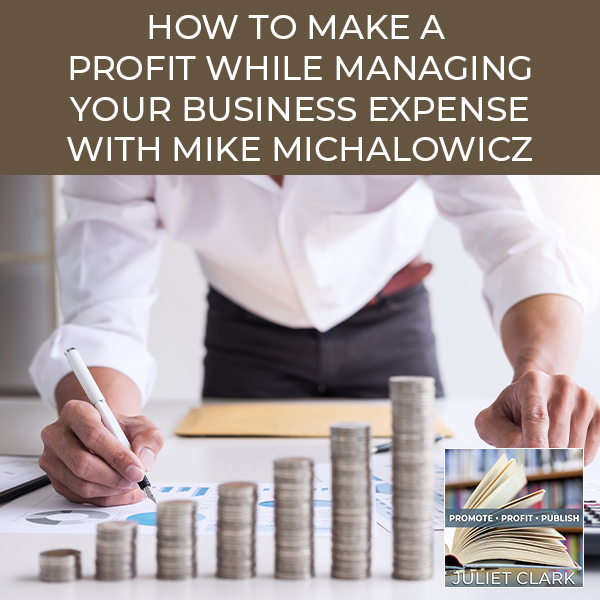



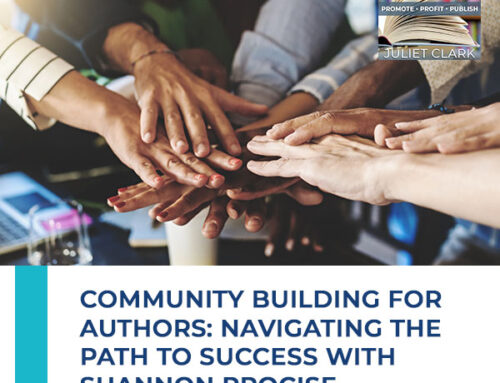



Leave A Comment